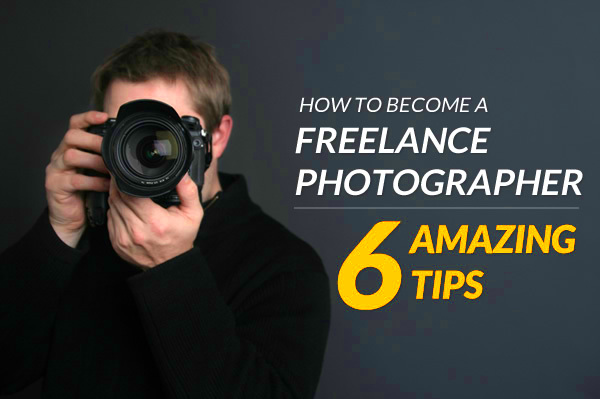Photographing portraits as a freelancer is an electrifying and fulfilling line of work. For those passionate about capturing moments and narrating tales using images, there may be no better career path. Life as a freelance photographer allows one the privilege of working according to their own desires, coming across different kinds of individuals, and expressing creativity freely. This blog entry will delve into the basics of portrait photography, discuss vital abilities that are necessary for it, and describe how to start off your journey in freelancing.
Understanding the Basics of Portrait Photography

The art of portrait photography is primarily all about capturing the character and feelings of a single person or a collective group. Here are some of its basic concepts:
- Composition: This refers to how you arrange elements in your photo. A well-composed portrait draws attention to the subject.
- Lighting: Good lighting can make or break a portrait. Natural light is often flattering, but artificial light can add creativity.
- Background: The background should complement the subject without being distracting. Simple, clean backgrounds often work best.
- Posing: A good pose can reveal a lot about the subject's personality. It's essential to guide your subject to achieve natural-looking poses.
Comprehension of these principles will lay a firm basis for your voyage into portrait photography.
Also Read This: General Pricing Guidelines for Freelancers
Essential Skills for Portrait Photographers

Several skills are needed for you to prevail as an independent photographer of portraits. The important ones include the following:
- Technical Skills: Familiarize yourself with your camera settings, lenses, and lighting techniques. Understanding exposure, aperture, and shutter speed is crucial.
- Communication Skills: Building rapport with your clients is vital. Being friendly and approachable will help them feel comfortable in front of the camera.
- Editing Skills: Post-processing is an important part of photography. Learn how to use editing software like Adobe Lightroom or Photoshop to enhance your images.
- Business Acumen: As a freelancer, you need to manage your own business. This includes marketing, accounting, and client relations.
Those skills could augment your photography and aid in launching an effective freelance career for you.
Also Read This: What is Fiverr App Used For?
Choosing the Right Equipment for Portrait Photography

As a beginner in portrait photography, your equipment can either make or break your career. You don’t necessarily have to spend a fortune on gear, but it is vital to know which tools are the most important. Here is a summary of what to think about:
- Camera: A DSLR or mirrorless camera with manual settings is ideal. Look for models with good low-light performance to enhance indoor shooting.
- Lenses: A 50mm or 85mm lens is perfect for portraits. These lenses provide a beautiful depth of field, allowing your subject to stand out against the background.
- Tripod: A sturdy tripod helps keep your camera steady, especially in low light. It’s a great tool for ensuring sharp images.
- Lighting Equipment: Consider using softboxes or external flash units to control lighting. Natural light works well, but having artificial lighting options can make a big difference.
- Editing Software: Investing in software like Adobe Lightroom or Photoshop is essential for post-processing your images and bringing out their full potential.
It enhances not only the confidence but also helps creativity to flow freely in your portraits.
Also Read This: Can I Boost My Fiverr Profile on Facebook?
Building a Strong Portfolio as a Freelance Photographer
In the photography world, your portfolio becomes your ID card. It shows your style and abilities; thus, it is a must-have for client attracting. Here are some tips for creating a compelling portfolio:
- Select Your Best Work: Choose a variety of your best portraits that showcase different styles and settings. Quality over quantity is key.
- Keep It Diverse: Include portraits of different subjects—individuals, families, and even pets. This variety shows your versatility.
- Tell a Story: Arrange your portfolio to take viewers on a journey. Include images that flow together and tell a cohesive story.
- Update Regularly: As you grow and improve, make sure to update your portfolio with new work. This keeps your presentation fresh and relevant.
As far as creating either a physical portfolio or its counterpart online is concerned, consider the latter since having an online presence reaches a more substantial audience while being significantly important in this era of technology.
Also Read This: Best Fiverr Sellers for Video Production in 2024
Marketing Yourself and Finding Clients
Every freelance photographer must know that effective marketing is indispensable. Your business cannot prosper without customers. The following are several techniques that will help you in marketing yourself effectively:
- Create a Professional Website: Your website should showcase your portfolio, services, and contact information. It’s often the first impression potential clients will have of you.
- Utilize Social Media: Platforms like Instagram and Facebook are fantastic for sharing your work and connecting with potential clients. Post regularly and engage with your audience.
- Networking: Attend local events, join photography groups, or participate in workshops. Networking can lead to referrals and collaborations.
- Offer Promotions: Consider special offers for first-time clients or seasonal promotions. This can attract new clients looking for a good deal.
- Ask for Referrals: After working with clients, don’t hesitate to ask them for referrals. Happy clients are often willing to recommend you to their friends and family.
Through aggressive self-promotion, you can create constant flow of customers for yourself while making yourself entrenched in the photography field.
Also Read This: General Freelance Pricing Strategies
Setting Your Pricing and Managing Finances
For a freelance portrait photographer, it is important to set the right price in order to succeed. You do not want to burn yourself while trying to make ends meet as an artist. Here are some tricks and tips on how you can set the right prices and take control over your finances:
- Research Market Rates: Look at what other photographers in your area are charging. This gives you a baseline to work with. Consider factors like experience, location, and service offerings.
- Calculate Your Costs: Factor in all your expenses, including equipment, software, marketing, and travel. Knowing your costs will help you set prices that ensure profitability.
- Offer Packages: Create different pricing packages that include various services. This gives clients options and can encourage them to choose higher-priced packages.
- Be Transparent: Clearly outline what your fees include. Clients appreciate knowing exactly what they are paying for, which builds trust.
- Manage Your Finances: Use accounting software to track your income and expenses. Regularly review your financial situation to adjust your pricing as necessary and keep your business healthy.
Freelance portrait photography that enables you to flourish can be done through fair pricing and prudent financial choices.
Also Read This: Why Do You Tip on Fiverr?
Frequently Asked Questions About Freelance Portrait Photography
If you’re about to plunge headfirst into the depths of freelance portrait photography, there are a few questions that are as common as they come. Here are responses to some frequently asked questions that can help guide you:
- What should I include in my portfolio? Your portfolio should showcase your best work, including a variety of styles and subjects to demonstrate your skills.
- How do I find clients? Utilize social media, create a professional website, attend networking events, and ask for referrals from satisfied clients.
- What equipment do I need? A good camera, quality lenses (like 50mm or 85mm), lighting equipment, and editing software are essential for portrait photography.
- How much should I charge? Research local market rates, calculate your costs, and consider offering packages to determine competitive pricing.
- Do I need a business license? Depending on your location, you may need a business license or permits to operate legally. Check local regulations to be sure.
These FAQs might clarify all of your uncertainties and assist you to prepare for the future career in freelance portrait photography.
Conclusion and Final Thoughts
To become a proficient self-governing likeness-taker may be quite an interesting journey. By acquiring fundamental knowledge, sharpening your ability and promoting yourself well, you will develop an effective enterprise for yourself. The art however lies in being enthusiastic about what you do, working hard on oneself continually. Always endeavor to better our own selves, purchase necessary tools and keep in touch with important consumers in a bid to maintain them. If you spend enough time and effort, it is possible to transform your love for photos into a flourishing independent vocation. Relish the experience, seize lovely instants and allow your imagination open wide!




